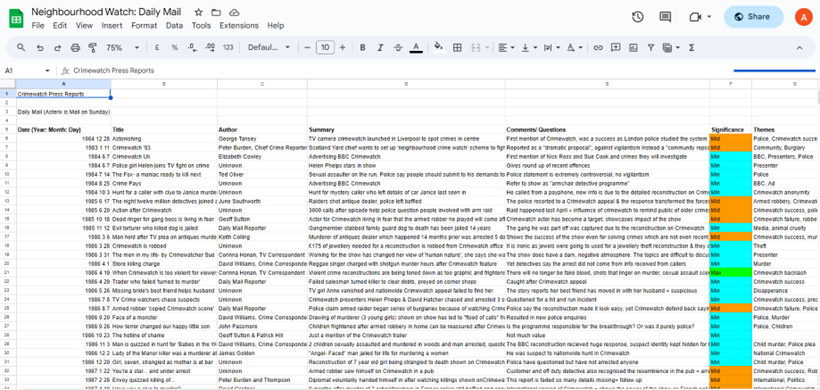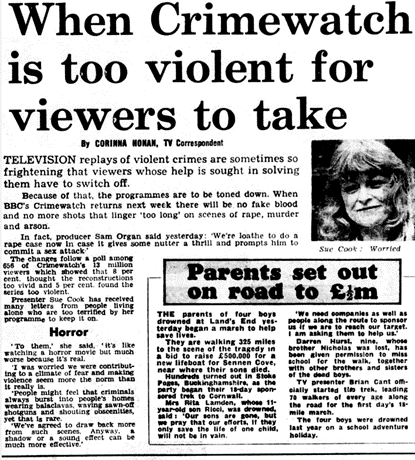When I got the news that I was chosen for the Collaborative Research Internship I quickly booked my ticket back to Birmingham. Having moved home for summer, I was very willing to go back to university as this was an exciting new opportunity I did not want to turn down. My internship’s project? It was Crime Prevention, Social Activism and Ordinary Life in 1980s Britian, working with Dr Chris Moores. There was three of us selected for it which I enjoyed as work was shared between us, we discussed our findings and bonded throughout the project. The internship involved the research of newspaper archives that reported on non- state crime prevention schemes and public responses to crime. This is what drew me to apply in the first place, because as a history undergraduate my dissertation is about the rise of gangs and gangsters in Britian across the twentieth century. So, the history of crime is my type of history.
It’s important to understand what the purpose of our work was and ultimately, we were helping Dr Chris Moores with his new book. It revolved around the research of three schemes- Neighbourhood Watch, Crimewatch and Crimestoppers and how they became a significant part society fighting crime in the 1980s and 1990s. And this was done mostly via digital databases. We began by splitting up the schemes between us interns. I was responsible for the show Crimewatch, and Dr Moores showed me that all the relevant articles were compiled on The Gale- a digital archive I used throughout the project. He also created a collaborative spreadsheet where we would enter our findings and comments. Essentially, this was the template for the output of the project. From there I spent time each week reading different newspapers (The Daily Mirror, The Daily Mail etc…) which reported on Crimewatch and entered the following the data:
- Date
- Title of article
- What the article was about
- Comments and Questions
- Significant (Min, Mid or Max)
- Themes of the report
- The link to the article

It was highly interesting reading all the reports on Crimewatch as they told stories about real life criminals and their activities (some were thrilling, others disturbing). The Daily Mail and Daily Mirror reported on serious cases taken on by Crimewatch, so I was reading a lot about murder and kidnappings. This led to me to question why Crimewatch targeted high profile cases to reconstruct because were they most entertaining for an audience, or did it spur the most motivation for the public to help? But the overall sense showcased the non-state scheme was widely successful. Because the newspapers documented on huge, valuable responses made by the public, just from sitting at home and phoning information in.

I will admit at times it was tough reading stories of murder and sexual assault over and over because the reports did not hold back on details. Yet at the same time, this was what Crimewatch was reenacting to the public in the 1980s and they were evidently less disturbed. The show rapidly gained millions of views weekly in the ten-year period which consequently brought about copycat crimes. I found many articles that reported- criminals used Crimewatch as inspiration for their illegal activities. As a result, I understand why this is such an intense and fascinating topic to write about. The crime prevention schemes quickly became popular however stirred up many other issues for public response in the 1980s.
The whole internship was a new and rewarding experience, and I learned so much across the six-week period. I am hugely grateful for the opportunity to work on a new study and contribute to Dr Chris Moores’ book. Being able to use digital archives, share and discuss my thoughts with colleagues hugely developed my research techniques and knowledge going into my third-year dissertation. So, for anyone considering applying for a Collaborative Research Internship- I say ten times over, do it!
Anezka Brown, BA History
